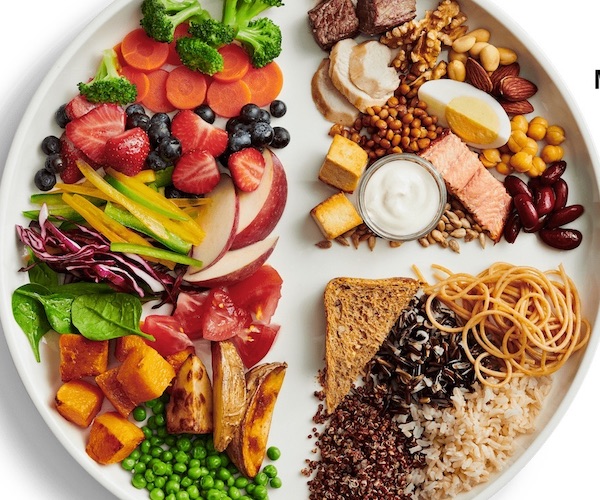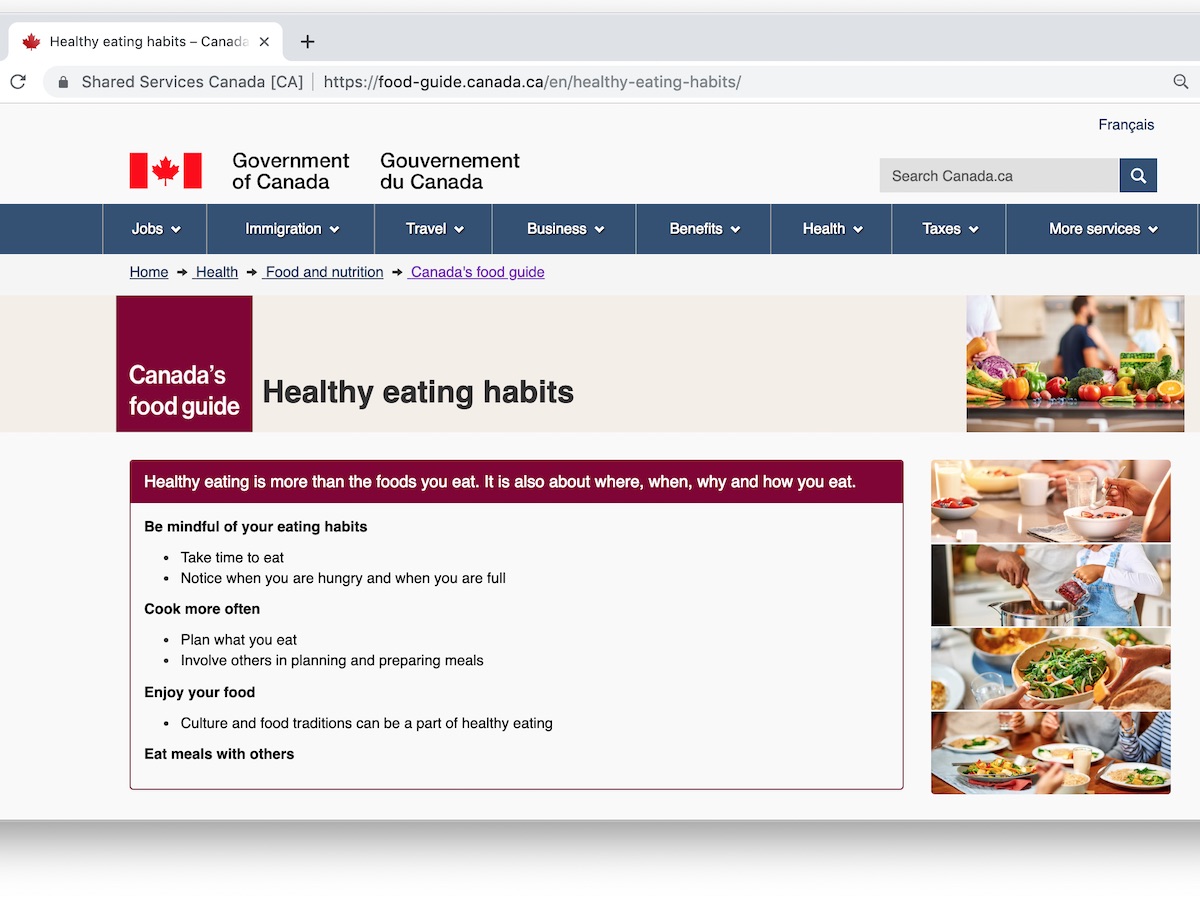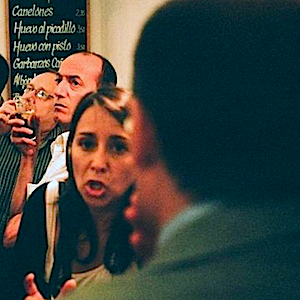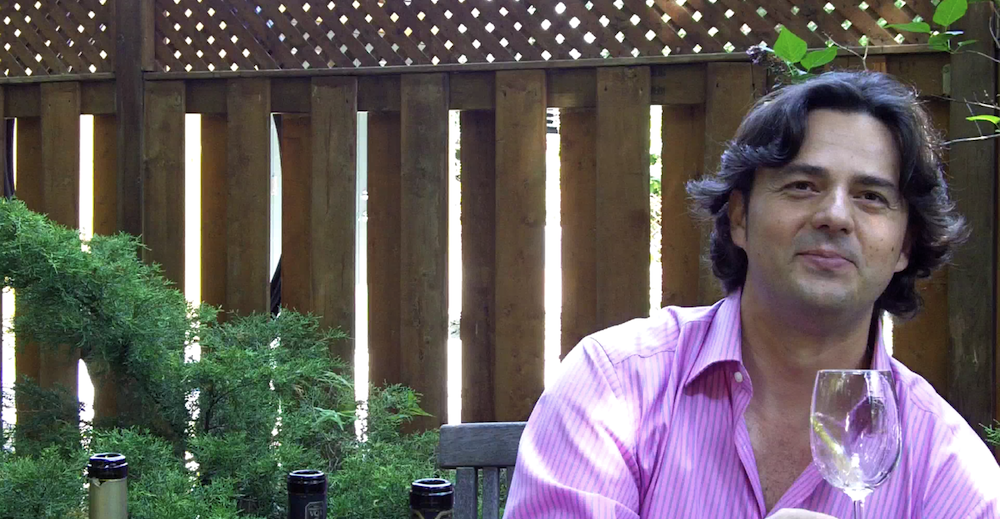Malcolm Jolley gets guided, Canadian-style.

I can only imagine the competitive virtue signalling and vicious passive aggressive jostling in the corner of whatever Health Canada office place produced our all new Canada Food Guide, illustrated above. The choice of which whole grains to place where on the still life pie chart of a plate that’s replaced the old pyramid built on a base of post-war supply-side economics, must have taken days of seething conflict to resolve. Did Quinoa have a sole dogged champion, or was it included through an alliance with the non-plant-based protein lobby, fighting their tactical retreat in support of what used to be called “meat”? (I bet the group who managed to get a few cubes of beef into the proteins, were the ones who threw milk under the bus: a final blow by the Western Cattlemen against their sworn enemy from the East, the Dairy Farmers, already weakened by the impending ratification of UMSCA.) Anyway, I’m sure we’ll never know. And while we’re on the topic of meat, how is it not plant-based? Last time I checked the chickens, pigs and cows whose parts fill up my butcher’s case were vegetarian. Surely a mighty ruminant is better at synthesizing plant stuff than a blob of tofu? Has the country gone mad?
I am probably irrationally cranky about the Food Guide. Its authors no doubt mean well. They most likely didn’t intend to garnish their pie chart plate with sentences missing periods that sound half like directives from the North Korean government and half what nagging advice might be given to an imbecile. I mean like “Eat protein foods”. Uh, ok. Are you sure?
Then there is the picture of the foods on the pie chart plate itself. There is conspicuously no food styling credit on the Guide’s website, which is both understandable but also kind of tragic. It’s actually a work of substantial creative genius. I can imagine the brief that has been carried out so perfectly: please construct a plate that no teenage boy would touch with a ten feet, sorry three metre poll. I am probably being unfair. There are individual bits of food on the plate that some people, at some time, might find appetizing. But when they are ever so carefully arranged together, all not glistening from lack of butter, or oil, or (God forbid) sauce, the effect is a Frankestein’s monster’s tableau of what those people mean when they say they “eat healthy”. Or maybe it’s meant to look like what would happen if someone went nuts at an all you can eat buffet at a yoga retreat, afflicted with a strange and cruel eating disorder that compelled them to try all the foods, but in tiny portions.

But I have only managed a critique of style. What about the substance?
In the section titled “Healthy food choices”, I suppose the directive of “Make it a habit to eat a variety of healthy foods each day” is pretty solid advice for people consulting the guide for a strategy of eating healthy foods. Eating healthy foods every day, for instance, certainly strikes me as healthier than never, or even every other day. I don’t why I am supposed to “choose protein foods that come from plants more often”? What business is that of the Food Guide whether I get all my protein from chickpeas or bacon? That sounds more like an expression of moral Puritanism than dietary advice to me.
To be fair, even I have no snark for the admonishment regarding the avoidance of “highly process foods.” On the other hand, while I agree that people ought to “Be aware that food marketing can influence [their] choices”, I wonder if there’s much hope for those who weren’t. Even so, I practiced the dark art of marketing for many years, and while I did it, it occurred to me that most of the general population misapprehend how marketing works, imagining it’s the business of persuading people to buy things they don’t want. It’s actually the diametric opposite. Google and Facebook make a lot of money by knowing precisely what things people want and serving them ads for them. You can warn my kids all you like that the soft drink companies are trying to influence them to drink pop, but they’re more than happy to be influenced because drinking sugary drinks pleases them more than water. They are aware of it. (I’m not picking on my kids: if the craft wine industry was as aggressive with their advertising as the soft drink one, I would use myself as a prime example.)
The part of the guide that addresses “Healthy eating habits” reverts, in my view, to “no kidding” mode. Do people really need to be told to “enjoy their food”? Were they holding back? Thinking about baseball or The Queen instead of how good each French fry dipped in mayonnaise tasted, in between sips of Chardonnay? Maybe what they meant was eat more enjoyable food, but this seems again at odds with the pie chart plate. The Guide here does concede that “Culture and traditions can be a part of healthy eating” but also seems to suggest by inference that they can’t. Or do they mean some cultures and traditions can, but some can’t? I suppose it fits that the Guide is a little murky when it comes to food culture, since if we had one, or respected the many established ones available to us, in Canada we wouldn’t need to spend money on pictures of plates laden with Quinoa and plant-based protein. I Googled “Italian Food Guide”, and apart from tourist information the two top results were 1) a Canadian website that had created a kind Italian version of the old pyramid but with more pasta, cheese and olive oil, and 2) a page on the website for the Food and Agriculture Organization of the United Nations that states in language refreshingly blunt for the UN: “Italy does not use a food guide”. Exactly.








